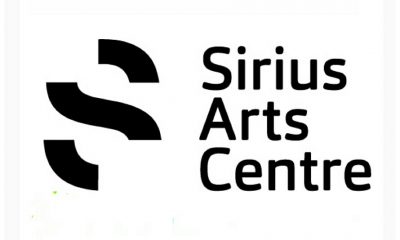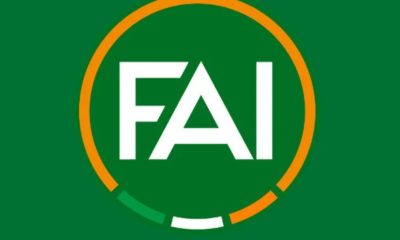Featured
Government’s ‘Smash and Grab’ on Pension Funds – Details and Implications…
- Share
- Tweet /home/eastcork/public_html/wdir/wp-content/plugins/mvp-social-buttons/mvp-social-buttons.php on line 68
https://www.cobhedition.com/wdir/wp-content/uploads/2011/05/cloud-nine-finance.jpg&description=Government’s ‘Smash and Grab’ on Pension Funds – Details and Implications…', 'pinterestShare', 'width=750,height=350'); return false;" title="Pin This Post">
 In an effort to combat the country’s debt crisis, the Minister for Finance Michael Noonan earlier this week announced the Irish government’s plans to impose a levy on private pension funds, which is designed to raise €470m a year for the next four years.
In an effort to combat the country’s debt crisis, the Minister for Finance Michael Noonan earlier this week announced the Irish government’s plans to impose a levy on private pension funds, which is designed to raise €470m a year for the next four years.
The annual levy of 0.6% will apply to the total value of the assets in private sector pension schemes, as well as to a minority of public-sector retirement funds.
Despite fierce public opposition to the plan, the government remain committed to implanting the proposal, and have confirmed the tax will be backdated to January 2011.
As the public debate on the ethics and fairness of the levy rumbles on, it’s important for consumers to take note of how their pensions operate, and how the new charges could affect their own pension provisions in the years ahead.
Let’s just remind ourselves briefly of how one can plan for retirement. It goes without saying that providing for retirement is a key financial need for many clients, and to achieve this desired income later in life, there are a variety of funding vehicles that may be used. The main pensions plans available to customers are; Personal Pension Plans, PRSAs and Occupational Pension Schemes.
Personal Pension Plan (PPP) – This is a private pension plan that is managed for the member by a life insurance company or investment firm. Such plans are available to anyone who earns an income, (be it through self-employment or other) and who has no access to an occupational pension scheme. All contributions to a PPP can be offset against Income Tax.
PRSA – Similar to a PPP, in that it is essentially a savings for retirement, with the difference being that anyone can contribute to it (beneficial for those without an income). In the case where an employer is not operating an occupational pension scheme, they are legally required to offer you access to a PRSA. Again, all contributions can be offset against Income Tax.
Occupational Pension Scheme – a pension plan set up by an employer to provide retirement and other benefits for employees. Plans can either be – Defined Benefit; where the retirement allowance is calculated from the number of years service and the employee’s final year salary, or – Defined Contribution; where an employee’s retirement benefits are calculated from the value of a pension fund when one retires.
Therefore if you are contributing to a pension plan, it is most likely to be one of the above. Taking this into account, we must now assess the impact, if any, that the recently announced ‘pension levy’ will have on retirement funding.
For ‘Defined-Benefit’ schemes, 0.6% will be taxed on the value of the scheme’s assets from this year up until and including 2014. Unfortunately the vast majority of DB schemes are underfunded as is, so with the additional charges due, the funds ‘administrators’ will have to either a) force its members to increase their contributions; or b) make a plan to cut its members future retirement benefits.
In the case of ‘Defined-Contribution’ schemes, it is likely that fund administrators will be forced to reduce their own ‘management costs’, whilst at the same time members may have to increase contributions.
Much of the same implications will apply to Personal Pension Plans and PRSAs, the funds of which have generally performed poorly in the past number of years. Given the poor performance of pension funds and the potential shortfall that they face, criticism of the government’s imposition of tax has been justified.
Further still, it would appear that pension provisions face additional restrictions in the coming years as the government has indicated it intends to cut tax reliefs for pension contributions.
At present, if you are a higher rate tax payer (41%) you can claim relief at this rate on your contributions. So, for example, if you are contributing €100 (before tax) per month into a pension, it equates actually to only paying €59 per month, i.e. you’re getting a €41 bonus on your contribution. The changes anticipated are that tax relief at marginal rate will be abolished and tax relief will only be available at the standard rate of 20% (€100 for your €80 contribution).
In trying to take some positive from this, perhaps recent developments will now encourage individuals to take stock of how their pensions are performing and whether or not they have in place suitable measures to provide for their retirement needs.
Pension plan owners should receive notification from their plan providers in the coming weeks detailing the levy’s full impact on their retirement funds.
– Jonathan O’Brien
————————————————————————-
Cobh Edition Note – Jonathan O’Brien currently Blogs on Financial Matters at
http://www.facebook.com/pages/Cloud-Nine-Finance/160475690683886
-

 Announcements2 weeks ago
Announcements2 weeks agoJOB OPPORTUNITIES Watersedge Hotel are currently hiring for the following positions
-

 Local News2 weeks ago
Local News2 weeks agoLandmark Partnership: Cruise Ireland and Cruise Britain Join Forces to Boost Cruise Tourism
-

 Events & Entertainment2 weeks ago
Events & Entertainment2 weeks agoSarah Browne Exhibition at the Sirius Arts Centre
-

 Local News2 weeks ago
Local News2 weeks agoSpike Island’s After Dark Tours return: Explore the haunting history of iconic prison island once dubbed “Ireland’s Hell”
-

 Local News2 days ago
Local News2 days agoCrosshaven RNLI Assist Two on Disabled Yacht
-

 Local News2 days ago
Local News2 days agoCyclists of all abilities encouraged to join Fort2Fort Charity Cycle 2024Saturday, 8th June
-

 Announcements2 days ago
Announcements2 days agoCobh Youth & Social Projects CLG have the following vacancies
-

 Events & Entertainment2 days ago
Events & Entertainment2 days agoSIRIUS ARTS CENTRE: COMMISSION: Aikaterini Gegisian
-

 Local Soccer1 week ago
Local Soccer1 week agoCobh Wanderers face College Corinthians in 1st Round of Sports Direct Men’s FAI Cup
-

 Sport15 hours ago
Sport15 hours agoJohn O’Shea extended as Interim Head Coach for June window






